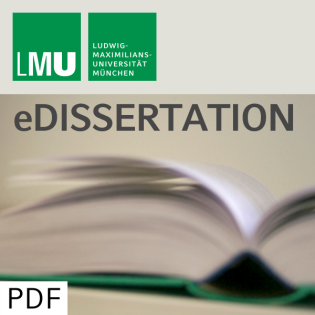
Generation of enhanced gene delivery vectors by directed evolution of adeno-associated virus
Beschreibung
vor 19 Jahren
Despite promising advance in the development of viral vectors based
on AAV for human gene therapy, several major hurdles for a more
general use remain. Among these, efficient in vivo applications are
limited by the high prevalence of neutralizing antibodies in the
human population, which can reduce or eliminate transgene
expression. A successful prevention of antibody-mediated vector
neutralisation requires the modification of specific epitopes of
the viral capsid responsible for Ab binding. The aim of this work
was to demonstrate that immune-escaping capsid variants can be
generated through genetic modifications of the virus by taking
advantage of combinatorial engineering and directed evolution
protocols. A library of 107 AAV mutants carrying random point
mutations scattered throughout the capsid gene of AAV was created
by error prone PCR and screened for clones that were able to avoid
neutralization by AAV-neutralizing human sera. Three mutants
carrying the mutations R459G, R459K and N551D respectively and a
double mutant with a combined R459K/N551D mutation were strongly
enriched after the selection procedure. Characterisation of these
clones showed an immune-escaping phenotype for all mutants.
However, the combination mutant proved to be superior in both
evasion of neutralization and infectivity, leading to the
assumption that multiple mutations convey enhanced effects.
Therefore, the remaining pool was subjected to DNA shuffling and
additional error prone PCR, yielding a second-generation library,
which was screened for further improved phenotypes. In this
context, a method which we called evolution monitoring was devised
allowing optimization of several experimental conditions that are
typically critical for successful outcome of library panning. These
refinements yielded novel variants with further enhanced
immune-escape abilities and infectivity in comparison to previously
selected mutants. Finally, obtained data suggests an enormous
potential for using the here developed tools to study infection
biology of viruses by reverse genetics. This work showed for the
first time that error prone PCR and DNA shuffling can be
successfully applied for genetic engineering of a virus by a
directed evolution approach. In principle, using appropriate
selection protocols these techniques should be adaptable for
addressing a wide variety of challenges concerning AAV in
particular and virology in general.
on AAV for human gene therapy, several major hurdles for a more
general use remain. Among these, efficient in vivo applications are
limited by the high prevalence of neutralizing antibodies in the
human population, which can reduce or eliminate transgene
expression. A successful prevention of antibody-mediated vector
neutralisation requires the modification of specific epitopes of
the viral capsid responsible for Ab binding. The aim of this work
was to demonstrate that immune-escaping capsid variants can be
generated through genetic modifications of the virus by taking
advantage of combinatorial engineering and directed evolution
protocols. A library of 107 AAV mutants carrying random point
mutations scattered throughout the capsid gene of AAV was created
by error prone PCR and screened for clones that were able to avoid
neutralization by AAV-neutralizing human sera. Three mutants
carrying the mutations R459G, R459K and N551D respectively and a
double mutant with a combined R459K/N551D mutation were strongly
enriched after the selection procedure. Characterisation of these
clones showed an immune-escaping phenotype for all mutants.
However, the combination mutant proved to be superior in both
evasion of neutralization and infectivity, leading to the
assumption that multiple mutations convey enhanced effects.
Therefore, the remaining pool was subjected to DNA shuffling and
additional error prone PCR, yielding a second-generation library,
which was screened for further improved phenotypes. In this
context, a method which we called evolution monitoring was devised
allowing optimization of several experimental conditions that are
typically critical for successful outcome of library panning. These
refinements yielded novel variants with further enhanced
immune-escape abilities and infectivity in comparison to previously
selected mutants. Finally, obtained data suggests an enormous
potential for using the here developed tools to study infection
biology of viruses by reverse genetics. This work showed for the
first time that error prone PCR and DNA shuffling can be
successfully applied for genetic engineering of a virus by a
directed evolution approach. In principle, using appropriate
selection protocols these techniques should be adaptable for
addressing a wide variety of challenges concerning AAV in
particular and virology in general.
Weitere Episoden

vor 17 Jahren

In Podcasts werben







Kommentare (0)